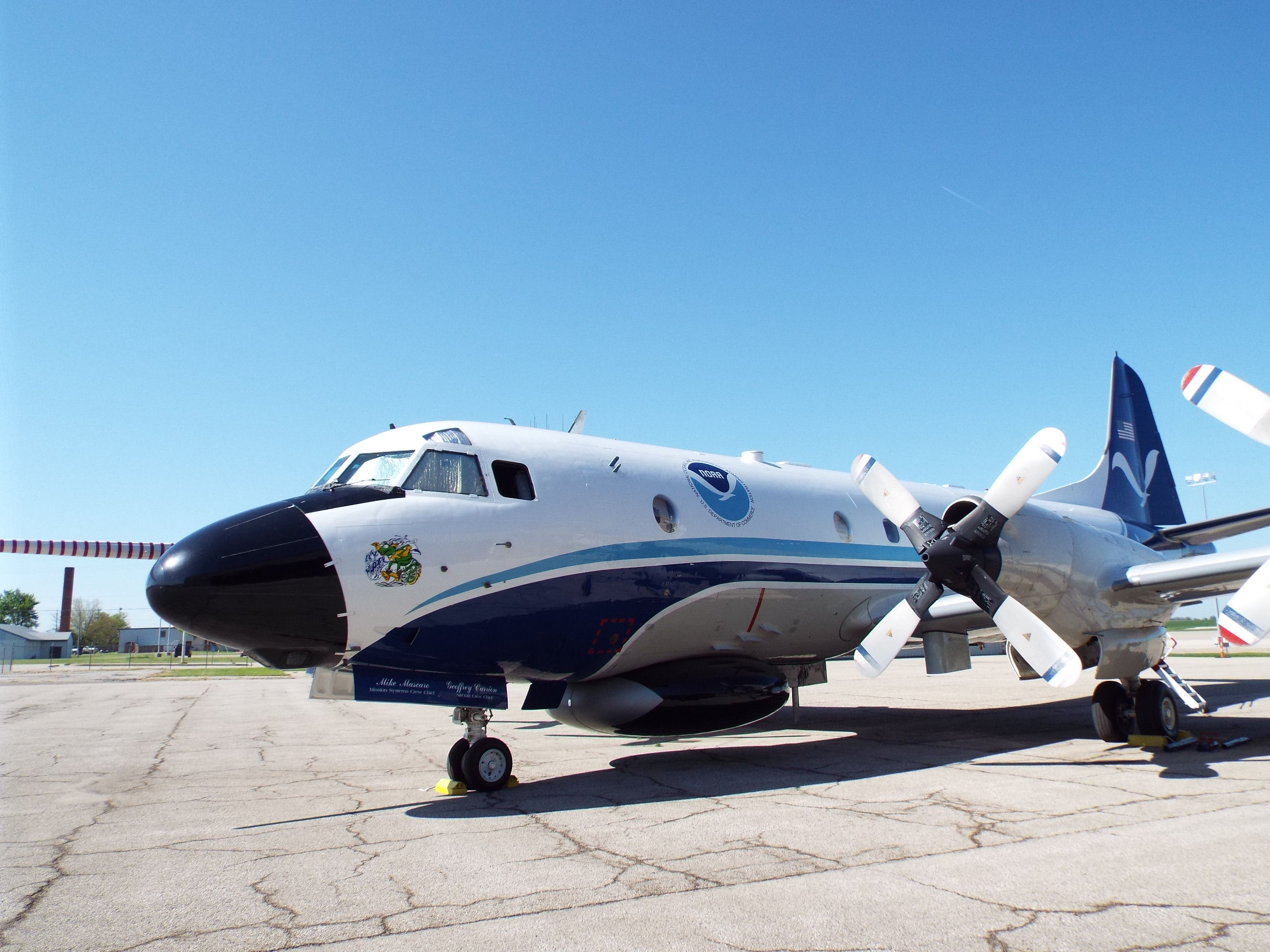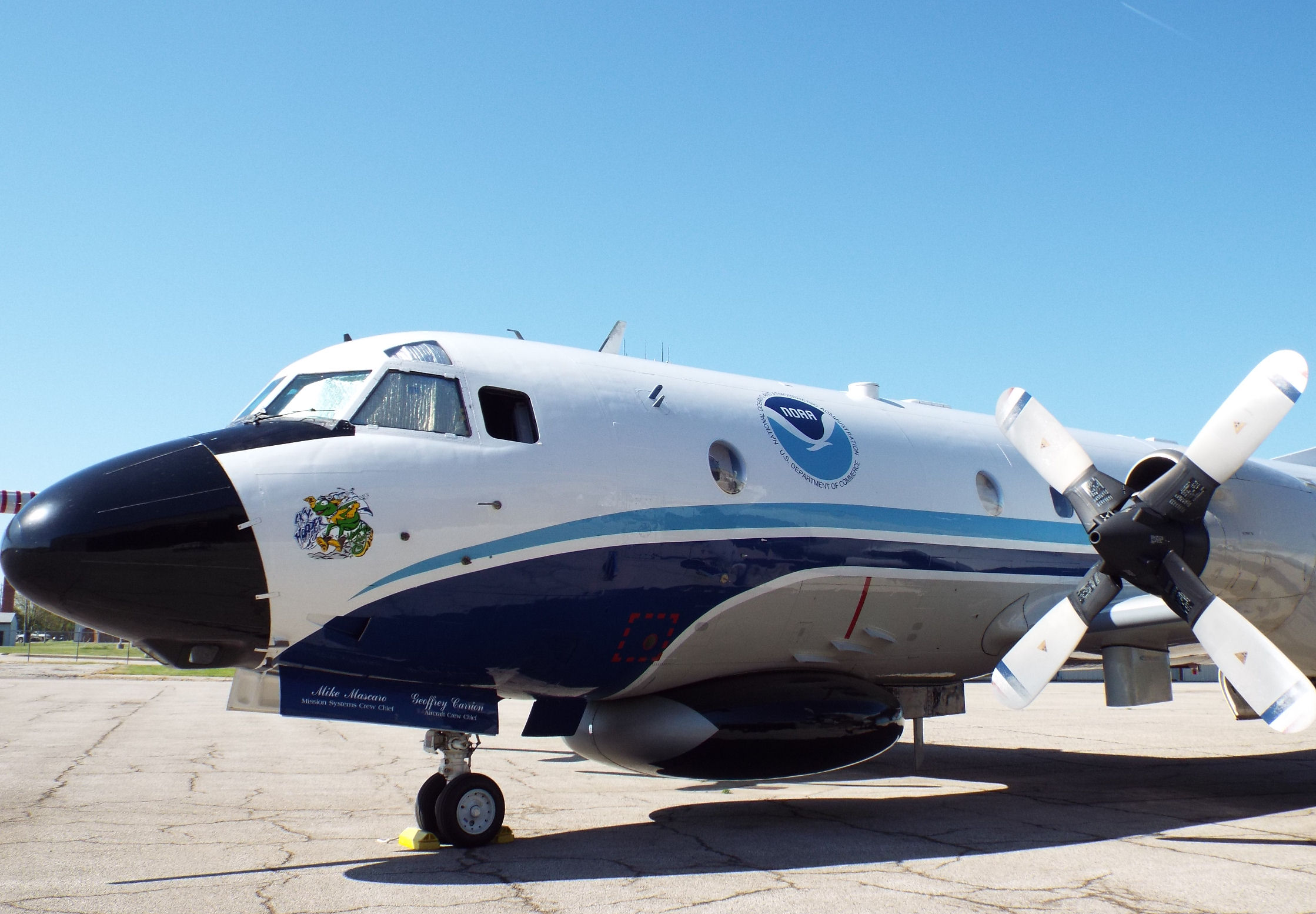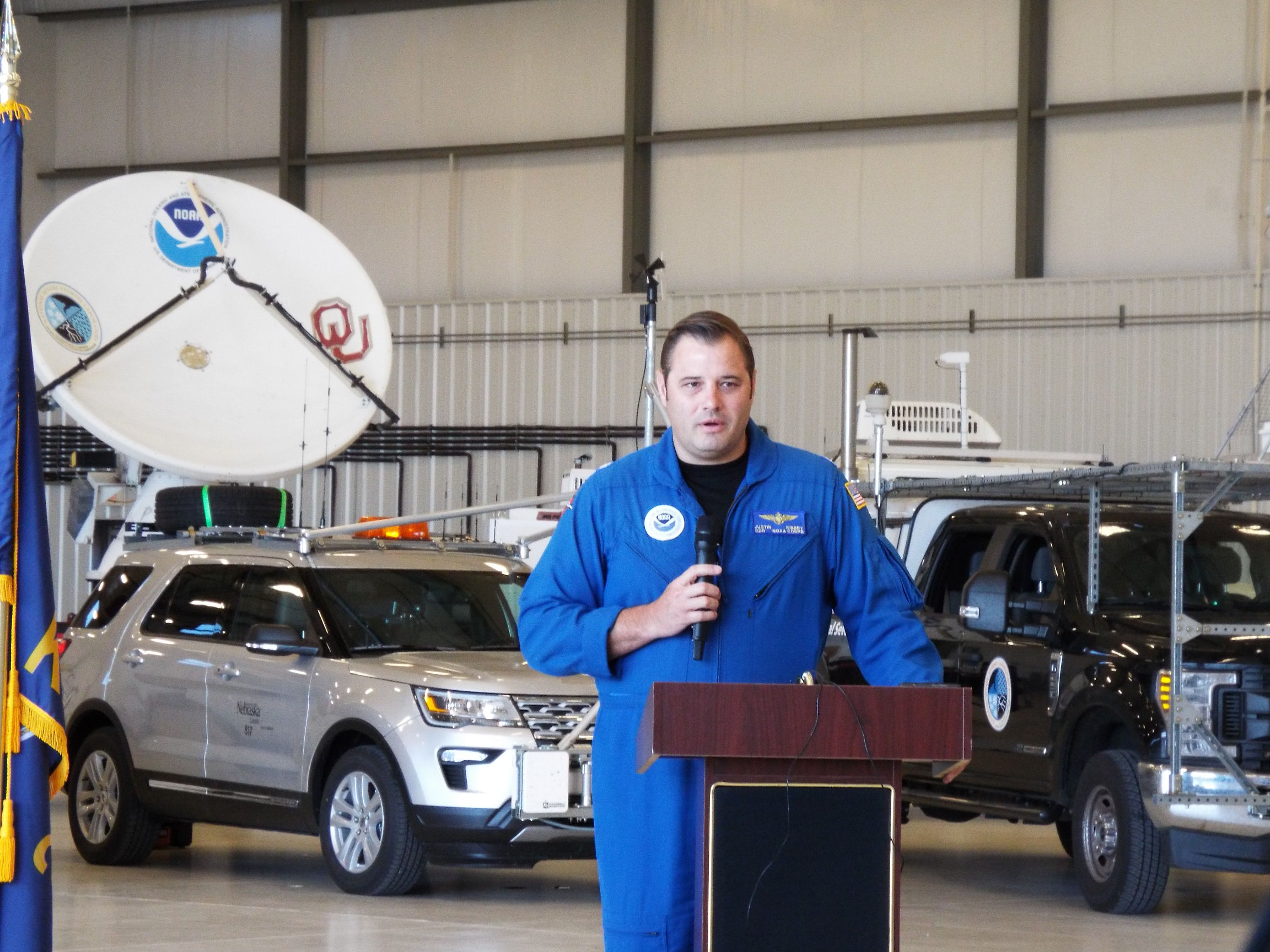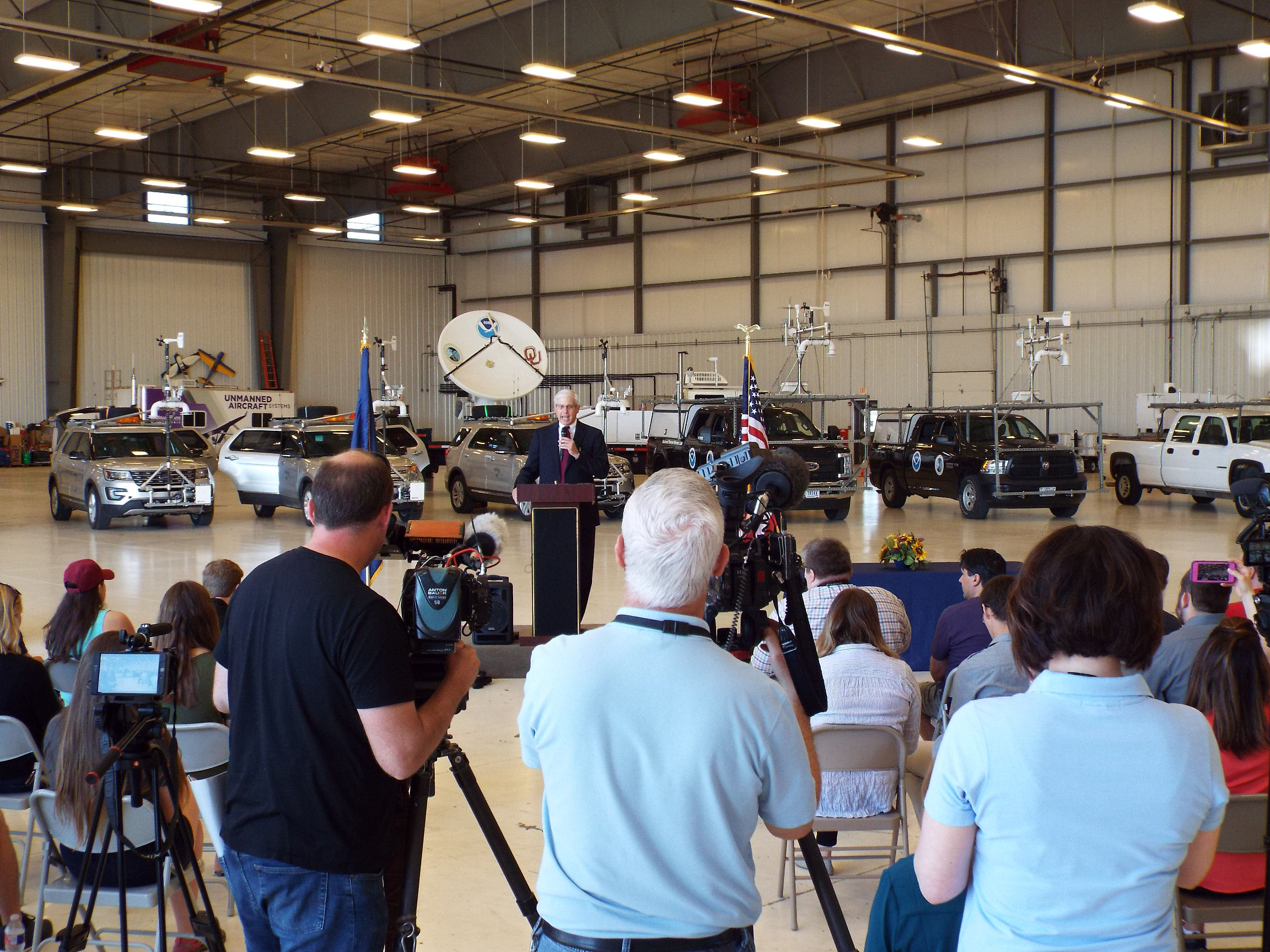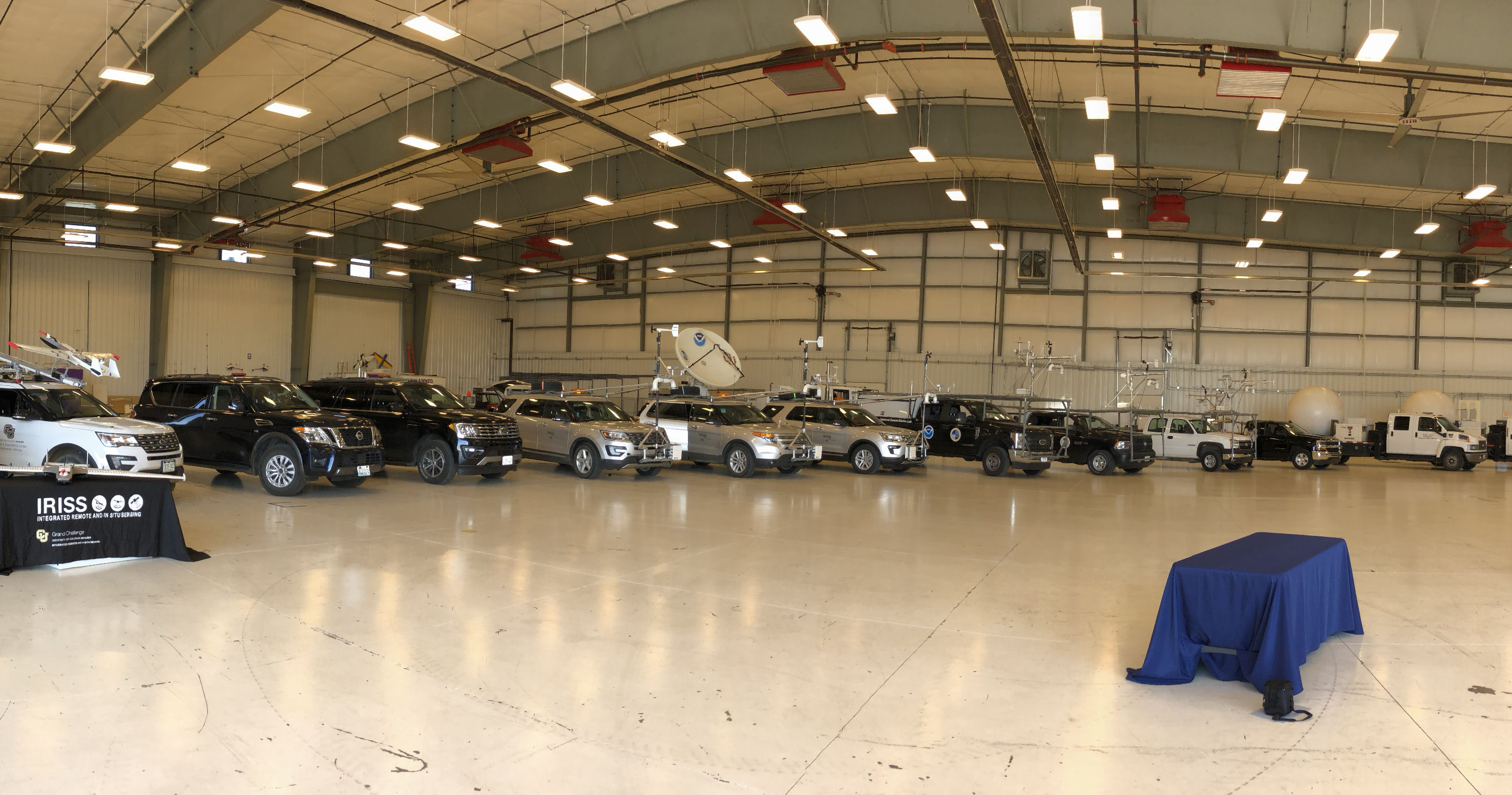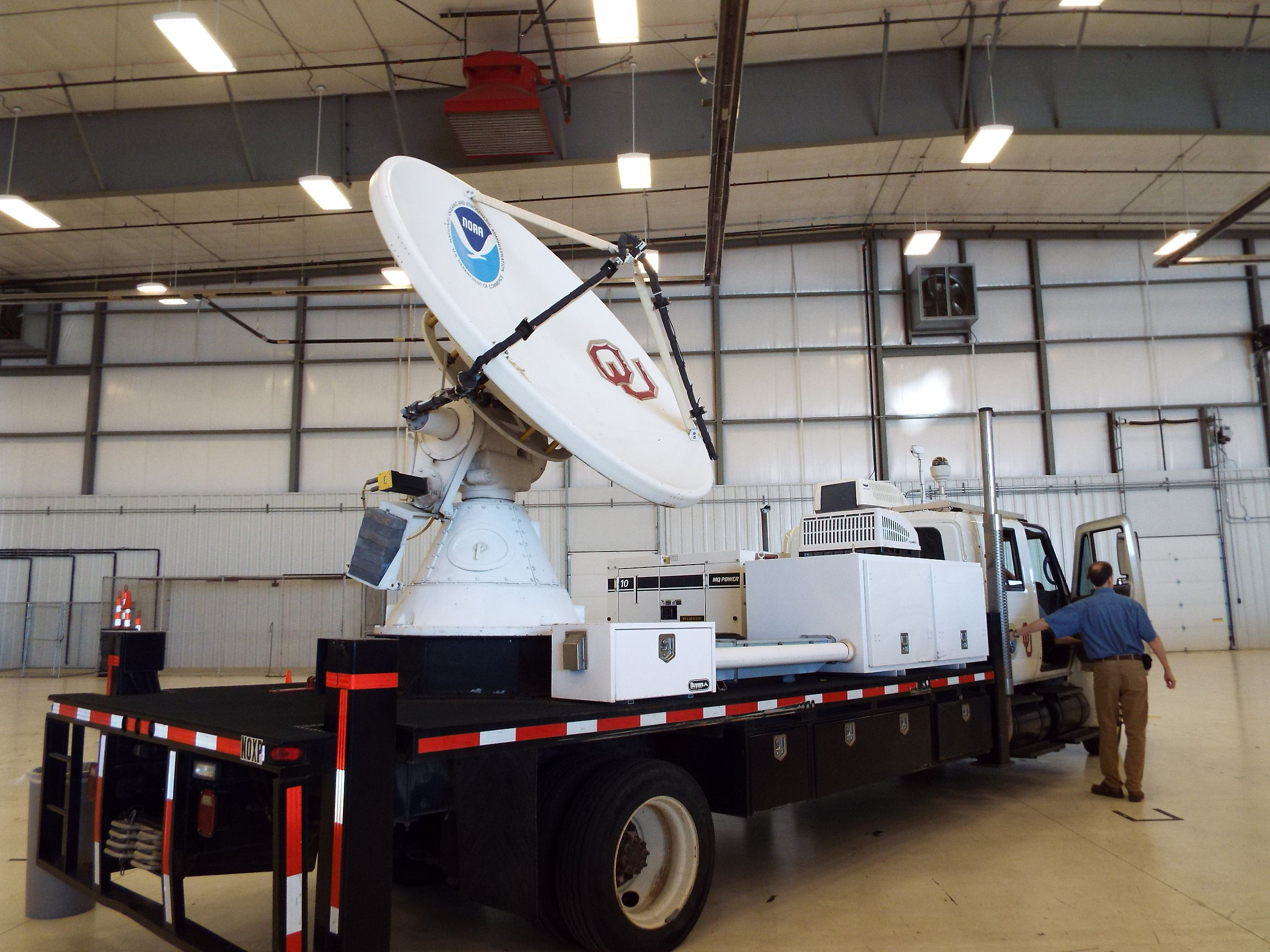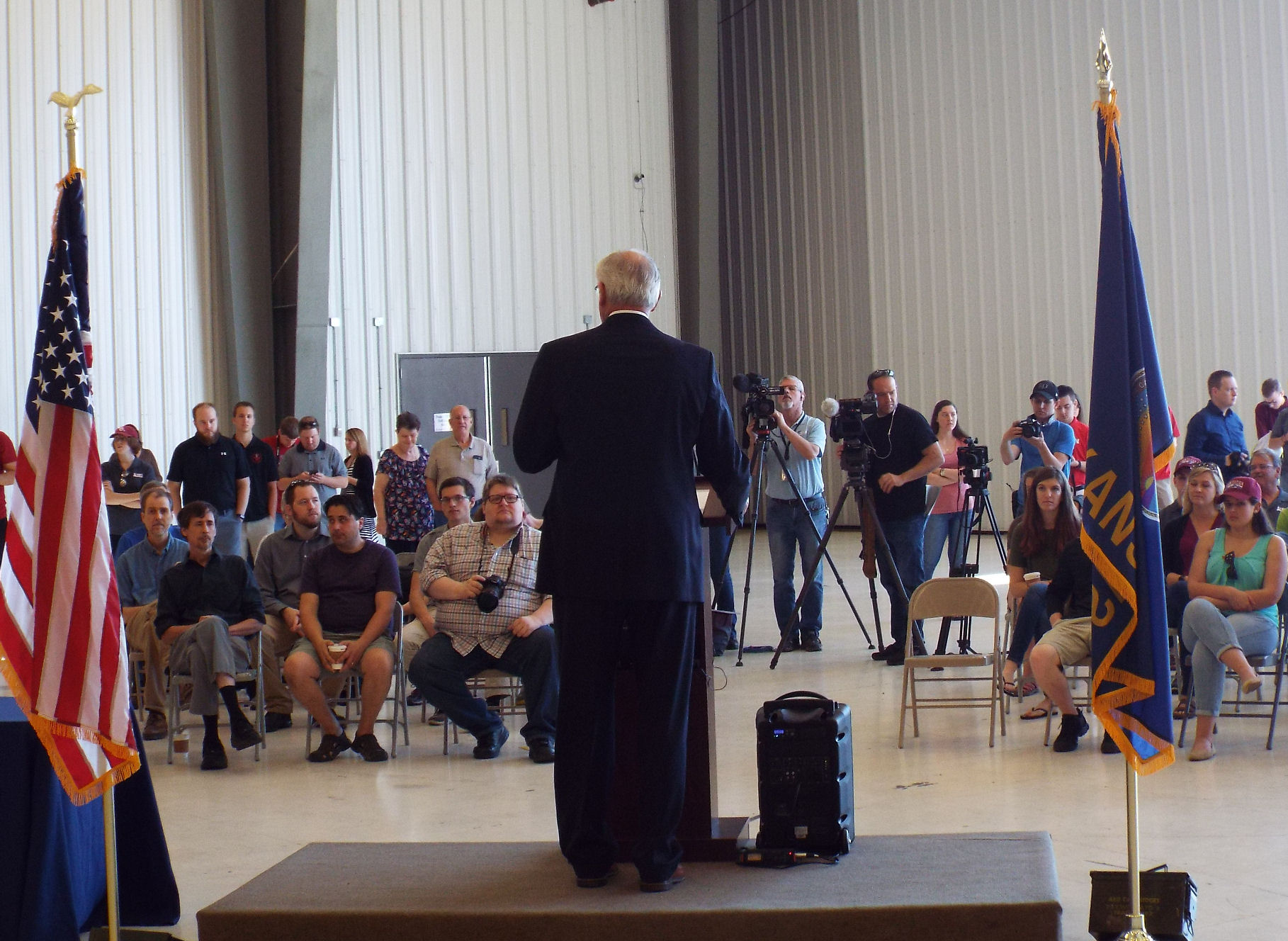What is being called one of the largest and most ambitious research efforts ever into severe weather is calling Salina its home base for the next 45 days. The TORUS project, or Targeted Observation by Radars and UAS of Supercells, is headquartered in a hangar at the Salina Regional Airport.
More than 50 researchers, including a mix of professionals and students from multiple organizations and universities in multiple states, are all participating. They will be deploying from Salina to areas where severe thunderstorms are developing.
Dr. Adam Houston from the University of Nebraska is coordinating the effort. At a media event Tuesday he said the objective is collect data on supercell thunderstorms across the Great Plains in an effort to better understand he relationships between severe thunderstorms and tornado formation.
Unique to this project is the use of drones, combined with the NOAA P-3 “Hurricane Hunter” aircraft. The “Hurricane Hunter” will fly each mission with over a dozen crew members collecting scientific data.
Aircraft Commander Justin Kibbey told KSAL News flying into severe thunderstorms is a bit different than flying into a hurricane. He said thunderstorms are much more tricky to navigate in and around.
Along with the “Hurricane Hunter” aircraft in the air, four drones will be flying into the supercell storms at the same time, all communicating with one another. At the same time other team members with multiple radars and other scientific equipment will provide ground-based observation as they travel into the storms.
The group will study how factors like wind speed, temperature, humidity and pressure may reveal the small-scale structures in a supercell storm and how it contributes to tornado formation.
The project covers 367,000 square miles — including North Dakota to Texas and Iowa to Wyoming and Colorado.
Salina Airport Authority Executive Director Tim Rogers told KSAL News Salina was chosen for the project for a couple of reasons, because of the facilities at the airport and because of the central location. It’s estimated the project will infuse about $750,000 into the Salina economy.
The TORUS project has numerous partners, with $2.4 million from the National Science Foundation and funding support from NOAA. The TORUS project is led by the University of Nebraska-Lincoln. Partner institutions include: NOAA NSSL, NOAA Office of Marine and Aviation Operations, University of Oklahoma Cooperative Institute for Mesoscale Meteorological Studies, Texas Tech University, and the University of Colorado Boulder.
(CLICK PHOTOS TO ENLARGE)
